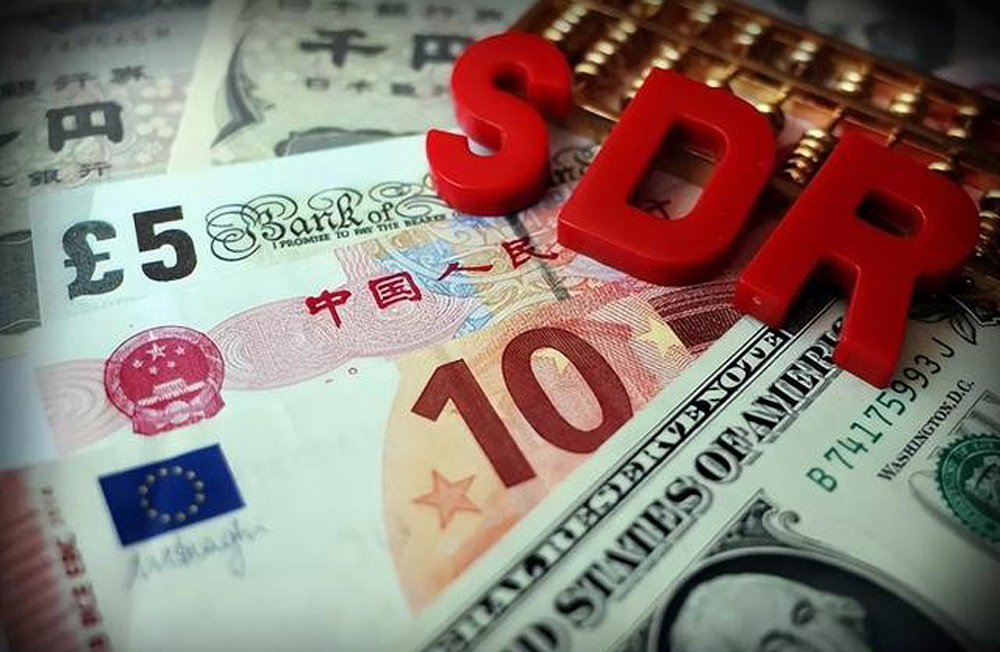
-
RMB’s share of international payments hits a new high, surpassing the Japanese yen
With the orderly advancement of RMB internationalization, RMB's share in the international payment field has hit new highs. Recently, transaction data compiled by the Society for Worldwide Interbank Financial Telecommunication (SWIFT) showed that in November 2023, the RMB's share of international payments rose to 4.6% from 3.6% in October, setting a record for the RMB. The RMB accounts for more than the Japanese yen in global payments, firmly ranking as the fourth largest currency in international payments. Specifically, the top five global payment currencies are, from high to low, the US dollar, the euro, the pound, the renminbi, and the yen. This data also reflects the gradual improvement of the international status of the RMB. The RMB has become the fourth largest currency for international payments. Behind it is the optimism about China's economy, the strong "magnetic attraction" of the Chinese market, and the world's recognition of China's contribution.
This data reflects the growing strength of the RMB as an international payment currency. In recent years, the international use of RMB has continued to increase, and positive progress has been made in the development of cross-border RMB trade settlement, RMB investment and financing functions, and RMB reserve functions. As the world's second largest economy, China's economic development and market potential have attracted much attention, providing favorable conditions for the internationalization of the RMB. In addition, the continuous upgrading and improvement of the RMB Cross-border Payment System (CIPS) has played an important role in providing efficient, convenient and safe fund payment and clearing services for various cross-border RMB businesses such as cross-border trade and financial market transactions.
-
RMB internationalization has made positive progress
The internationalization process of RMB has gone through 14 years. Since the launch of cross-border RMB trade settlement in 2009, the RMB's status on the international stage has gradually increased and a series of positive results have been achieved. From all aspects of the international use of the RMB, we can see its development momentum.
The first is cross-border RMB trade settlement. According to data, from January to September 2023, the amount of cross-border RMB collection and payment by Bank of China on behalf of customers reached 39 trillion yuan, a year-on-year increase of 23%. This means that more and more companies choose to use RMB for international trade settlement, which fully reflects the activity and convenience of RMB in cross-border trade.
The second is the investment and financing function of RMB. In September 2023, the RMB's share in global trade financing reached 5.8%, rising to second place. This shows that the RMB's status in international investment and financing activities continues to increase, attracting more international capital inflows. This not only provides financial support for China's economic development, but also provides diversified investment options for international investors.
In addition, the reserve function of the RMB has also been recognized internationally. At present, more than 80 overseas central banks or monetary authorities have included the RMB in their foreign exchange reserves, which once again proves the stability and credibility of the RMB. As an alternative currency, the improvement of the RMB's international reserve status not only enhances the RMB's international status, but also provides more guarantees for China's financial security.
-
Challenges and opportunities faced by the international use of RMB
Although the process of RMB internationalization has made positive progress, it still faces some challenges. First, the recognition and usage of RMB by international investors still needs to be improved. Although the RMB is gradually being included in the horizons of international investors, there is still a gap in the international usage of the RMB compared with major currencies. This may be related to factors such as the international liquidity of RMB and RMB capital account restrictions.
The second is the competitive pressure in the international payment market. Although the RMB has become the fourth largest international payment currency in the world, its share is still small compared with major currencies such as the US dollar and the euro. In the competition in the international payment market, the RMB faces many challenges, including the construction of the international payment system and the unification of cross-border payment rules.
However, challenges also bring opportunities. As the world's second largest economy, China's international status and influence continue to increase, providing strong support for the internationalization of the RMB. With the rapid development of China's economy and the continuous expansion of opening up to the outside world, the prospects for the internationalization of the RMB are still full of hope.
-
Summary
The RMB's share in international payments continues to grow, surpassing the Japanese yen and becoming the world's fourth largest international payment currency. This data reflects the progress and momentum of RMB internationalization. From cross-border RMB trade settlement, RMB investment and financing functions to RMB reserve functions, RMB is playing an increasingly important role on the international stage. However, RMB internationalization still faces some challenges, such as the recognition of international investors and competitive pressure in the payment market. However, with the continuous rise of China's economy and improvement of its international status, the prospects for RMB internationalization are still full of hope. We look forward to the future and see greater development of the RMB on the international stage.
Rationally judged, the current huge fiscal deficit in the United States will not lead to an internal fiscal crisis. The reason is that the Federal Reserve has the power to mint money. The additional issuance of US dollars can monetize the fiscal deficit, thus continuously filling the deficit gap and increasing liquidity. It can also lead to a periodic depreciation of the U.S. dollar, thereby diluting the U.S. government’s debt repayment costs, and at the same time weakening the market gaming capabilities of countries with large U.S. dollar asset reserves. However, as the fiscal body becomes increasingly unhealthy, the U.S. relies on additional issuance of U.S. dollars and treasury bonds to release funds. It’s hard to say how far the fiscal deficit pressure will continue. Moreover, the three major international rating agencies, Standard & Poor’s, Fitch International, and Moody’s Investors Service, have all revoked the U.S.’s AAA credit qualification. Can the U.S. continue to develop smoothly around the world? Debt financing also shows more uncertainty. Once debt issuance is blocked, the related risks will be doubled and poured back into the fiscal deficit, and the global economy will follow the twists and turns.
Article Source: Selection of the Stock Exchange Research Report(The author is a director of the China Marketing Society and a professor of economics)



